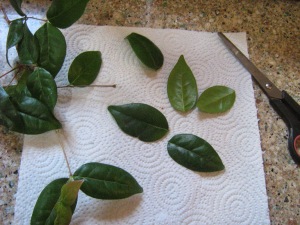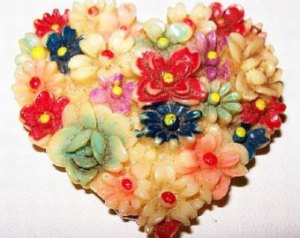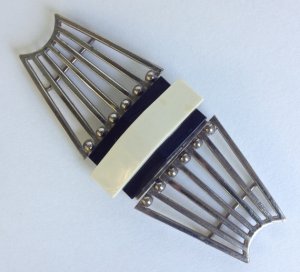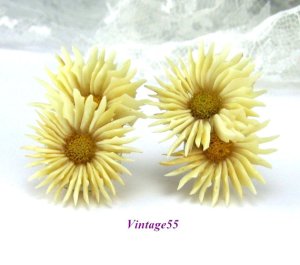Selecting your leaves:
Skeleton leaves can be used in scrap booking, gift wrapping and other crafts. These leaves are beautiful and lacy. Skeleton leaves are also very simple to make.
The first step is to collect leaves you want to skeletonize. The easiest leaves have tougher skeletons – oak and maple leaves are best suited. Delicate leaves will also do, but may tear when using the washing soda method.
The Water Method:
The easiest way to make skeleton leaves is to simply put them in a bucket of water and wait until the pulp falls out of the leaf. This might take 2-3 weeks, but the process is gentle to the leaf and is effortless.
The water has to be changed every few days, as the pulp begins to fall out of the leaves. The water will also become rancid quickly, if not replaced. You can add some bleach to the water to prevent it: simply add about 1/4 cup bleach to a bucket of water.
Once all of the pulp is gone, remove the leaf skeletons and allow them to dry.
The Washing Soda Method:
It is possible to make skeleton leaves by using Washing Soda. Washing soda is sodium carbonate, and can be found on grocery store. It can also be made at home, from baking soda.
Making washing soda at home is detailed on:
http://www.pennilessparenting.com/2011/01/homemade-washing-soda.html.
Fill a saucepan with 2 cups of water and 3 tablespoons of washing soda. Stir. Bring it to a boil, and then remove from the heat source. Put the leaves in the washing soda solution and allow them to soak for approximately 30 minutes.
Since I don’t have access to maple leave,I used Pitanga leaves
http://en.wikipedia.org/wiki/Eugenia_uniflora
After 30 minutes, remove the leaves, one at a time , to a baking pan with shallow water in. Use a blunt paintbrush to gently remove the leaf pulp. Be careful not to tear the leaf skeleton. Once the pulp is removed, set the skeleton aside to dry.
Different kind of leaves might need longer times.
If pulp is not easily removed I transfer it to a few days to the water method treatment…
If you want a white leaf skeleton, place it in a solution of water and some bleach. Allow it to sit until all traces of green are gone, then dry.
Dying Skeleton Leaves
Skeleton leaves may be used white, but they can also be dyed. Basic food coloring is one option.Simply submerge the leaves in a solution of food coloring and water and allow the skeletons to soak until they take up the color.












